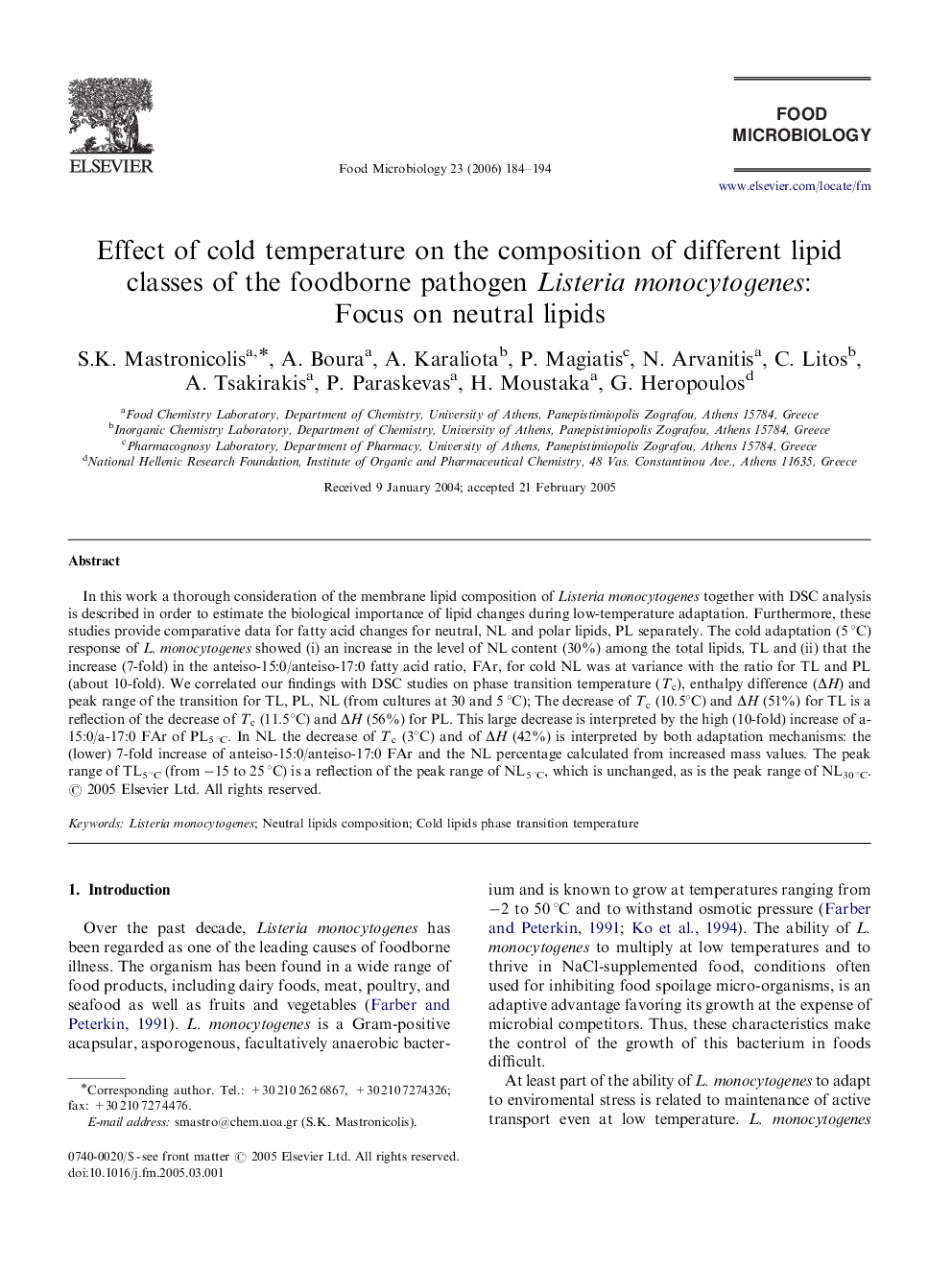| Article ID | Journal | Published Year | Pages | File Type |
|---|---|---|---|---|
| 4363900 | Food Microbiology | 2006 | 11 Pages |
In this work a thorough consideration of the membrane lipid composition of Listeria monocytogenes together with DSC analysis is described in order to estimate the biological importance of lipid changes during low-temperature adaptation. Furthermore, these studies provide comparative data for fatty acid changes for neutral, NL and polar lipids, PL separately. The cold adaptation (5 °C) response of L. monocytogenes showed (i) an increase in the level of NL content (30%) among the total lipids, TL and (ii) that the increase (7-fold) in the anteiso-15:0/anteiso-17:0 fatty acid ratio, FAr, for cold NL was at variance with the ratio for TL and PL (about 10-fold). We correlated our findings with DSC studies on phase transition temperature (TcTc), enthalpy difference (ΔH) and peak range of the transition for TL, PL, NL (from cultures at 30 and 5 °C); The decrease of TcTc (10.5°C) and ΔH (51%) for TL is a reflection of the decrease of TcTc (11.5°C) and ΔH (56%) for PL. This large decrease is interpreted by the high (10-fold) increase of a-15:0/a-17:0 FAr of PL5 °C. In NL the decrease of TcTc (3°C) and of ΔH (42%) is interpreted by both adaptation mechanisms: the (lower) 7-fold increase of anteiso-15:0/anteiso-17:0 FAr and the NL percentage calculated from increased mass values. The peak range of TL5 °C (from −15 to 25 °C) is a reflection of the peak range of NL5 °C, which is unchanged, as is the peak range of NL30 °C.
